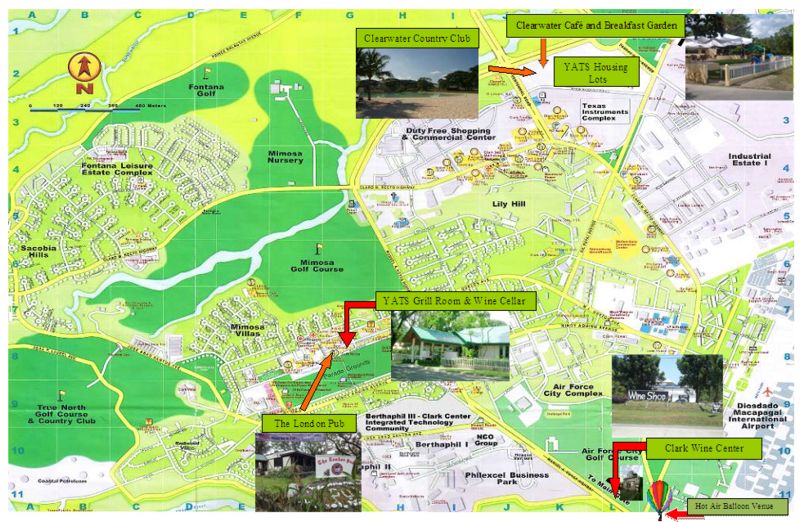About wine grape Petite Sirah / Durif
June 11, 2011
Philippines wine supplier Manila wine shop discusses wine by the grape variety Petite Sirah.
Petite Sirah / Durif
Petite Sirah is a variety with many fans among consumers. Originally cultivated and labeled as Petite Sirah only in California, its origin was unknown and identification uncertain and could only be speculated upon, until late in 2003.
Historically, the majority of vineyards plantings identified as Petite Sirah were actually mixed varieties of a dozen or more distinct types, but often including grapes with confusingly similar characteristics, such as Durif, Peloursin, and Syrah.
Just over 3,200 acres of grapes identified as Petite Sirah were planted in California as of year 2000. Although only a portion of these vineyards have been surveyed, recent DNA evidence from research led by Dr. Carole Meredith at the University of California at Davis has confirmed most plantings to be the same grape as Durif. About 10% however, is Peloursin, which, observed in the field, is practically indistinguishable from Durif, even by expert ampelographers.
It was long theorized this was the case, that Petite Sirah was the same as the lackluster French variety known as Durif, a cross of Peloursin, yet another unremarkable variety, with the true Syrah. A French nurseryman, Dr. FranΓ§ois Durif, propagated the grape trying for resistance to powdery mildew and named it after himself, in the 1870s. The inability of Durif to produce distinguished, high quality wines in France effectively nullified the value of its mildew-free attribute, especially since the grape’s compact clusters left this variety particularly susceptible to bunch rot.
In the 1940s, Larkmead and Louis Martini sold wines labeled “Duriff” and plantings in McDowell Valley were documented in 1948. The fruit source for these wines was probably what later became known as Petite Sirah. Most plantings of Petite Sirah were made before the 1960s, when vintners were mainly concerned with producing copious amounts of flavorful blends of generic “Burgundy”. Wines that showed varietal identity were of little consequence.
Field-blending was the norm during this time, with many varieties often interplanted. As a result, few vineyards identified as Petite Sirah are “pure”. Vineyard blocks are often peppered with vines of Alicante Bouschet, Carignan, Grenache, Mourvedre, the aforementioned Peloursin, or Zinfandel. The reality therefore is that wines from these vineyards labeled “Petite Sirah” to at least some degree are blends, accidentally if not purposefully.
Although the nomenclature is similar and Petite Sirah is a true offspring of Syrah, the vines and grapes of parent and child are quite different and distinct from one another and these varieties should never be used synonymously. In April, 2002, the TTB announced they will forthwith consider Petite Sirah and Durif synonymous for use on wine labels.
California plantings have increased to over 6,000 acres now and as many as sixty wineries today produce varietal Petite Sirahs for fans and followers. The first to do so were Concannon and the original Souverain, both from the 1961 vintage. Some vintners choose to spell it as “Petit Sirah”, “Petite Syrah”, or “Petit Syrah” and , although this is no doubt intended to provide some advantage in the marketplace, it merely serves to confuse consumers and defer their attention. These variant spellings are also used in other countries where the grape has migrated: Argentina, Brazil and Mexico.
At four to eight tons per acre, Petite Sirah is a fairly good producer. The vines are sturdy and fairly long-lived and thrive in many types of soil. The berries are somewhat prone to sunburn. Their tight grape clusters are also subject to rot when damp or rained upon. Typically a midseason ripener, however, this is not usually a problem in California.
Petite Sirah has long been an important blending grape, prized primarily for its deep color and fairly intense tannin. It is the variety most often chosen to blend into zinfandel for added complexity, body, and to tone down the tendency of zins toward “jammy” fruit.
On its own, the appeal of Petite Sirah is more visceral than specifically-flavored. Usually high in pigment and tannin, young wines may show dark berry fruit characteristics. On poor soils, when severely pruned and fully ripened, some black pepper spice may add to typical meaty density. Mostly Petite Sirah can be described as “vinous” and, although agreeable, pleasant, and sometimes delicious, not highly distinctive. Nevertheless, wines made from Petite Sirah age slowly and can survive fairly long cellaring of ten years or more.
QUE SIRAH: A CELLAR LESSON
Among the Petite Sirahs that truly impressed me early on, particularly the 1969, ’71 and ’74 vintages, were those made by Freemark Abbey and Ridge, both sourcing grapes from Napa’s York Creek Vineyard on Spring Mountain. Deeply fruited, with lavish richness and round, massive tannins, each begged the question of cellaring potential for this varietal.
Hoping to revive the memory, we followed our March, 2002, Petite Sirah tasting (NOTES), by opening a bottle of 1974 Freemark Abbey, recently acquired from a well-kept private cellar. Although not completely gone and still possessing considerable tannin, the aroma was but a hushed whisper of black licorice; the bouquet was sadly dominated by musty staleness; the flavors also dull and dank.
We’ll savor our memories (…wistful sigh!) and be reminded to review our personal cellar lists, with eyes open and corkscrews at ready, prepared to spare any and all bottles of more than a decade-old from similar fates.
Source: http://www.winepros.org/wine101/grape_profiles/petite.htm
Pampanga Angeles City and Clark Philippines is a popular choice for event organizers and company event planners because it is safe, secure and conveniently accessible from Manila. The short travel time from Manila to Clark means there is more time for participants to enjoy the programs, relax and unwind in the outdoor facilities of this highly recommended resort hotel in Clark.
Travelers going north to Clark Pampanga frequently look for enjoyable hotel for family bonding during summer vacation in the Philippines. Many visitors to Angeles City, Pampanga Clark Philippines prefer to stay in private resorts located in a secure and safe destination. Staying in a private place makes it possible to enjoy a peaceful holiday with no stress.
Subic is a popular destination for visitors from Manila bringing family out of town for a short getaway to the north. Subic is well known for its diving sites, the sea and water sports that come with the territory. However one thing that Subic is not famous for is dining options. For years, visitors to Subic have complained about the quality of the restaurants and dining establishments but it is only until recently that travelers to Subic discovered the best restaurant to wine and dine, even for visitors with families and children.
This web site contains articles and information that will be helpful to visitors, residents and tourists traveling out of town from Manila on a short getaway to Subic, Angeles City, Pampanga and Clark Philippines. There are several web sites that contain information that might also be pertinent to what is happening in North Luzon, Subic, Tarlac, Pampanga, Clark Freeport Philippines.
Wedding couples looking for wedding reception venues and beach wedding venues can log on to this Philippines Wedding Venue web site for free information and assistance:
For assistance with lodgings, accommodations, hotels and resorts near Manila in Subic, Pampanga, Angels City and Clark Philippines log on to http://www.HotelClarkPhilippines.com
While in Clark, one might as well add to the itinerary a visit to the famous Clark Wine Center, the largest wine shop in Philippines which offers over 2000 selections of fine vintage wine from all wine regions, vintages spanning over 50 years covering all price ranges.
http://www.ClarkWineCenter.com
If this article about Clark is useful to you, please click here to contact us to tell us what more you wish to know about this article or Clark Philippines, which can be something about Clark investment, about Clark resorts, about Clark Swimming and Leisure or simply general news about Clark.
Please send questions to Editor@ClarkPhilippines.com. Leave your name, email address, contact numbers and we will get back to you as soon as possible. Information received will not be disclosed.













